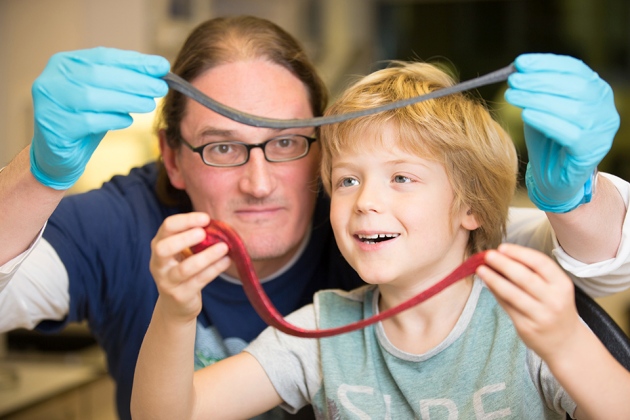If you are as old as me you played with plasticine, a clay-based material that could be manipulated into almost any kind of shape. Later on, came Silly Putty, a silicone polymer that came stuffed in a plastic egg. Silly Putty had similar properties to plasticine but it could do one thing the former couldn’t do. Press it on a print picture and it would transfer the image to the putty’s surface. Silly Putty could be made into a ball that bounced. It could be stretched and snapped forming a clean break between pieces. It was very versatile.
But Silly Putty is turning out to be more than a toy. Spiked with graphene it can become a wearable medical device to monitor blood pressure and other vital signs. In a joint effort by researchers at Trinity College Dublin, and the University of Manchester, an experiment blending graphene flakes with the putty produced something called G-Putty.
What is it?
Mostly the familiar silicone polymer that we played with in my younger days, but with 20-atomic layers of graphene flakes mixed in. It’s dark grey in appearance and reactive to external stimuli.
In a test, a piece of wired-up G-Putty placed on a volunteer’s neck picked up a visible pulse profile and accurate blood-pressure reading. Placed on the chest it accurately clocked respiration rates.
How does it work?
The graphene flakes create a conducting network within the silicone polymer that responds to any slight movement from the object upon which it is placed. So a person’s pulse or the rise and fall of a diaphragm leads to temporary deformation and reformation of the material which translates into readable data.
Voila, the beginnings of a new type of sensor that would be cheap to make, and non-invasive, and could replace much more expensive monitoring technologies. The bonus is instead of single-instance measuring, the G-Pugtty sensor could be worn continuously providing 24/7 monitoring.
The Trinity College researchers even tested G-Putty with spiders. The individual steps of a spider weighing a mere 20 milligrams were recorded. There were two spiders in the test and the only time the G-Putty experiment missed registering their activity was when the arachnids were left unattended, and one ate the other.
Since publishing the G-Putty discovery back in 2016, the Trinity team has been printing sensors made from the material. They have created G-Putty-based inks that they print on band-aids that can be attached to the skin.
States Jonathan Coleman, who heads up the Trinity physics lab where G-Putty was invented, “We have now turned G-Putty, our highly malleable graphene blended silly putty, into an ink blend that has excellent mechanical and electrical properties. Our inks have the advantage that they can be turned into a working device using industrial printing methods, from screen-printing to aerosol and mechanical deposition.”
With G-Putty the medical device market can move downstream into the consumer marketplace with personalized, wearable sensors that can be integrated into clothes or worn on the skin. Personal monitoring devices fit with the current home gym craze that has accelerated because of the global COVID-19 pandemic. G-Putty sensors would be able to monitor breathing, pulse, and joint motion and gait. They could even be used to monitor early labour during pregnancy.









